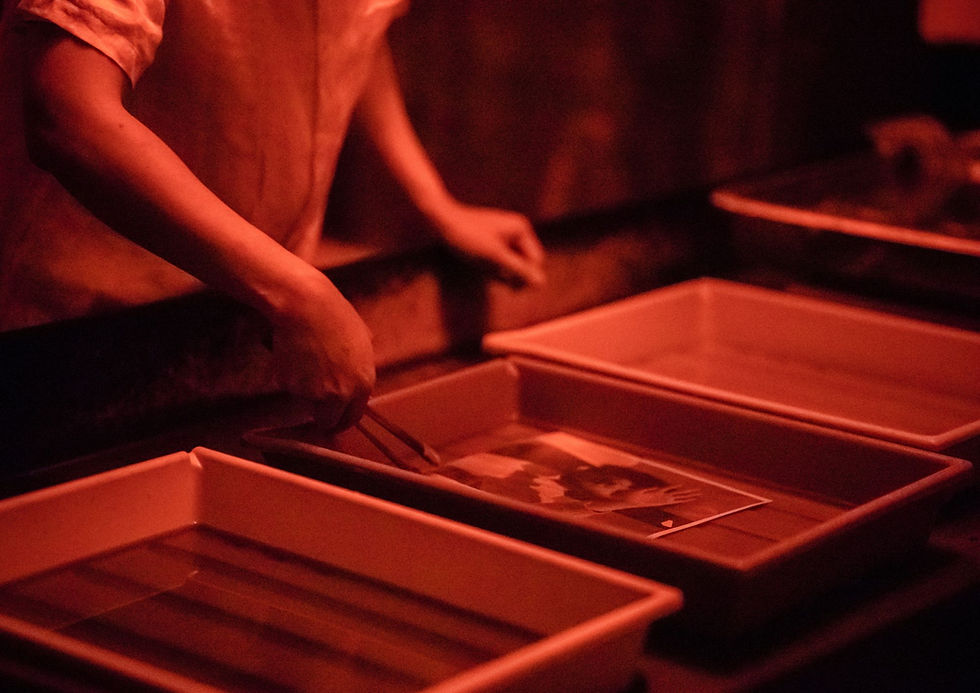Mordançage: Transforming Prints & Altering Realities
- Alternative Processes

- Jul 19, 2023
- 3 min read

In the vast realm of alternative photographic processes, one technique that stands out for its ethereal and surreal results is the Mordançage process. Developed in the early 20th century by French photographer Jean-Pierre Sudre, this process involves altering the silver gelatin emulsion to create beautifully haunting and textured images. In this article, we'll delve into the historical background of Mordançage, guide you through the step-by-step process, and introduce you to contemporary artists who continue to embrace this captivating technique.
Jason Lazarus
A little history: Mordançage finds its origins in the early 1900s when Jean-Pierre Sudre began experimenting with different chemical treatments to manipulate traditional silver gelatin prints. Sudre discovered a unique combination of bleaching, redeveloping, and selective toning that yielded distinctive results. The process gained recognition and popularity among photographers for its ability to create dreamlike, painterly effects.
Derived from the French word "mordre" meaning "to bite," Mordancage is a photographic technique that involves etching, bleaching, and redeveloping an image to create surreal and ethereal effects.
The Technique: Derived from the French word "mordre" meaning "to bite," Mordancage is a photographic technique that involves etching, bleaching, and redeveloping an image to create surreal and ethereal effects. It all comes down to a series of transformative steps that alter the appearance and texture of a photographic print. The process typically starts with a gelatin silver print. Here are the primary steps involved.
It can be done with both fiber-based or resin-coated paper.
Create a print in the conventional manner, in the darkroom, with regular photographic paper, using a negative or even photograms.It is crucial for the image to possess contrast, as the transformation occurs within the darkest areas of the print. We want deep, rich & bold blacks. You can use a print that is fresh out of the final wash, or a dry print. If dry, give the print a little water bath. Then, we start:

Bleaching: The photographic print is immersed in a Mordancage solution, which dissolves the silver emulsion on the paper surface. The primary components typically include acidic substances and oxidizing agents.The acidic component of the Mordancage solution helps in etching and removing the silver and gelatin emulsion from the print's surface.The duration of the bleach bath is critical, as it determines the extent of the image alteration. It can take from 1 to 15 minutes. The mordançage solution consists of the following materials (Wikipedia):
10 g copper(II) chloride
50 mL glacial acetic acid
25 mL 30%-35% hydrogen peroxide
distilled water to make 1 liter At this point, you will the black portions of the print detach, it creates a unique and unpredictable texture on the print, with delicate webs of black and white reminiscent of veins or intricate patterns.
2. Rinse the print thoroughly with distilled water to stop the bleaching process. This step helps stabilize the image and remove any residual bleach.
3. Re-developing: The print is then redeveloped using traditional darkroom developer. Fresh or used developers can be employed at different dilutions, alongside certain toners. The choice of developer and dilution impacts the tonal qualities observed in the paper. Uneven redevelopment may occur in areas where the emulsion has degraded. The process of removing the emulsion can lead to a reversal effect upon redevelopment.
4. Rinse, Fix & Washing: Once the desired appearance is achieved, the print is fixed to stop the development process. It is then carefully washed to remove any residual chemicals, ensuring the longevity of the final image.

Elizabeth Opalenik
Mordancage printing offers a world of artistic possibilities, pushing the boundaries of traditional photography. By following this step-by-step guide, you can embark on your own mordancage journey to create captivating, textured prints. Embrace the unpredictability of the process, refine your techniques, and let your artistic vision come to life through this extraordinary alternative photographic process.




Comments